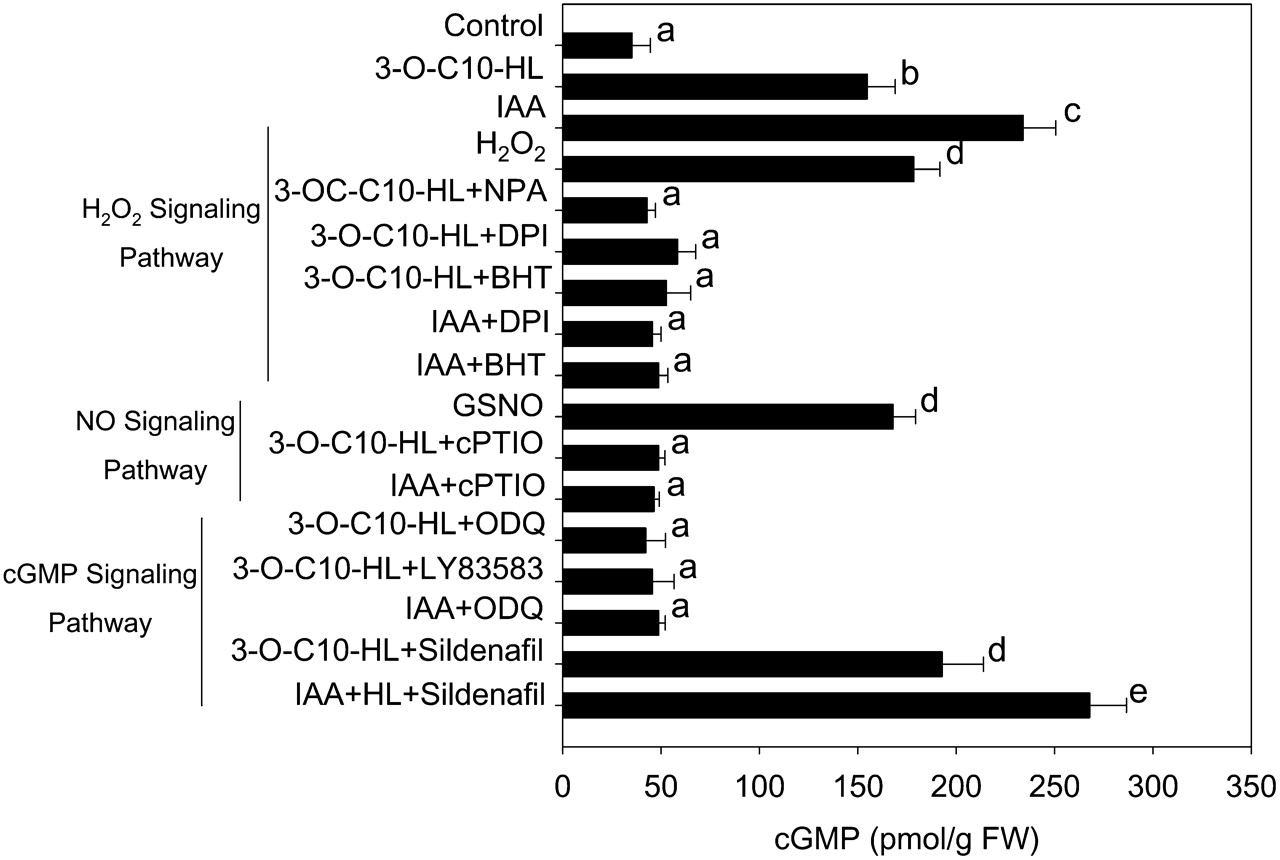N-acyl homoserine-lactones (AHLs) are bacterial quorum-sensing signaling molecules that regulate population density. Recent evidences demonstrate their roles in plant defense responses and root development. H2O2, nitric oxide (NO) and cyclic GMP (cGMP) are essential messengers that participate in various plant physiological processes, but how these messengers modulate the plant response to AHL signals remains poorly understood.
Researchers at the Kunming Institute of Botany show that the N-3-oxo-decanoyl-homoserine-lactone (3-O-C10-HL), in contrast to its analogue with an unsubstituted branch chain at the C3 position, efficiently stimulated the formation of adventitious roots and the expression of auxin-response genes in explants of mung bean seedlings. This response was mimicked by the exogenous application of auxin, H2O2, NO or cGMP homologues, but suppressed by treatment with scavengers or inhibitors of H2O2, NO or cGMP metabolism. The 3-O-C10-HL treatment enhanced auxin basipetal transport; this effect could be reversed by treatment with H2O2 or NO scavengers but not by inhibitors of cGMP synthesis. Inhibiting 3-O-C10-HL-induced H2O2 or NO accumulation impaired auxin- or 3-O-C10-HL-induced cGMP synthesis, however, blocking cGMP synthesis did not affect auxin- or 3-O-C10-HL-induced H2O2 or NO generation. Additionally, cGMP partially rescued the inhibitory effect of H2O2 or NO scavengers on 3-O-C10-HL-induced adventitious root development and auxin-response gene expression. These results suggest that 3-O-C10-HL, unlike its analogue with unmodified branch chain at the C3 position; can accelerate auxin-dependent adventitious root formation possibly via H2O2- and NO- dependent cGMP signaling in mung bean seedlings.
The study has been supported by the Hundreds of Talents Program of the Chinese Academy of Sciences and the National Natural Science Foundation of China, and has been published in the February issue of Plant Physiology (http://www.plantphysiol.org/content/158/2/725.full).

The effects of different inhibitors or scavengers and donors on 3-O-C10-HL-induced accumulation of H2O2 and NO in mung bean explants. (image by KIB)




